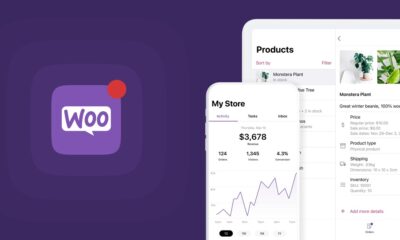Technology
Ultimate Custom Product Fields: A Complete Beginner’s Guide


Customized services and personalized products are key to retaining customers and generating more leads. This can be accomplished in WooCommerce with custom product fields where the product fields are beyond what you see with the default WooCommerce settings.
Make your product pages look worth exploring and interacting with with the inclusion of custom fields. The types of fields you can consider including are:
- Text
- Radio Button
- Radio Image
- Radio Color
- Date Picker
- Time Picker
- Color Picker
- File Upload
- Google Map
These are some of the fields; however, adding either of these to the product pages depends on your specific needs and the type of product you sell. Let’s explore these custom fields in depth and identify how to include some in your WooCommerce site. So, keep reading.
What Are Custom Product Fields?
Custom product fields in WooCommerce are product add-on options allowing users to customize their purchases. These custom product fields have dependencies, which means that the display of one field relies on the input of the other field.
The features these fields should offer are:
- Easy to implement and integrate
- Supports user input
- Allows conditional display
- Add a fee to the fields when required
- Multiple input types
- Rearranging with ease
These features vary depending upon the source of adding these product fields. With a plugin for adding WooCommerce custom product add-ons, the features are extensive.
Benefits Of Custom Product Fields In WooCommerce
A lot of WooCommerce stores still stick to default WooCommerce settings, thus missing out on a lot of benefits. With the acceptance of custom product fields, you succeed in including these benefits to your site:
1. Customization Levels
For a business with customizable goods, these product fields are no less than a blessing. Customization of a product is possible when user preferences are prioritized. With custom WooCommerce fields for products, you ask for their choices to customize the product. With such fields, you can ask what toppings and flavors your customers prefer if you are selling cakes or any bakery item.
2. User Experience
Forcing your choices on the customers is not taking you anywhere. So, better ask for their requirements through these custom fields. The more the customer has a say in their purchase, they can have memorable experiences. These experiences are the key contributors to retaining your customers and attracting more.
3. Increased Order Value
Add-ons are a way to increase the order value by letting the customer add an extra product or a product feature. You can charge an amount for each of the product add-ons, which helps you improve the average order value. In return, your customer gets the best combination of the products that they will choose themselves through these fields.
4. Situational Display
One of the best things about these add-ons is that they do not necessarily have to be there for a product or products from certain categories. With default WooCommerce settings, you are not entitled to any such benefit. Based on the situation and certain conditions, you can choose to display or hide these custom fields.
5. Upselling Opportunities
One of the opportunities custom fields bring for your business is a medium to upsell and cross-sell. Upselling is one of the best ways to manage your inventory and encourage customers to buy products that have better pricing. This way, you can improve your revenue and profits effortlessly. By cross-selling, you can pave the path for the selling of complementary products that are hard to sell alone.
Conclusion!
For your WooCommerce site, offering opportunities that are a source to boost custom experiences is paramount. Through multiple tricks and methods, you succeed in providing seamless shopping experiences; one of them is product customization.
If you are still affiliated with the traditional WooCommerce setup, then you must be struggling with the provision of such experiences. You can achieve this objective by including custom product fields in your WooCommerce products. Make sure you are opting for a product add-on plugin to get things done the right way.
Author Bio:
Kainat is an experienced digital marketer who works for FMEAddons. His passion is assisting people in creatively using WordPress and WooCommerce. He enjoys researching and writing about social media platforms, SEO, and digital marketing developments.





 Technology2 months ago
Technology2 months agoWhy Adding Videos to WooCommerce Product Galleries is Essential in 2025



 General2 months ago
General2 months agoWhat Is Smart Construction? A Beginner’s Guide



 Technology1 month ago
Technology1 month agoHow to Send WooCommerce SMS Notifications for Orders



 Technology1 month ago
Technology1 month ago7 Essential TikTok Metrics to Track for Higher TikTok Views in 2025

 Model3 weeks ago
Model3 weeks agoTiffany Stratton: Biography, Wiki, Age, WWE Career, Net Worth, Before Fame, Boyfriend





 Technology4 weeks ago
Technology4 weeks agoTop 5 Tips for Using File Uploads in Your WooCommerce Store Efficiently

 Technology3 weeks ago
Technology3 weeks agoWhy Airlines Are Using Virtual Reality Services for Pilot Training



 General4 weeks ago
General4 weeks agoThe Hidden Costs of a DUI & How a Lawyer Can Help You Avoid Them




You must be logged in to post a comment Login